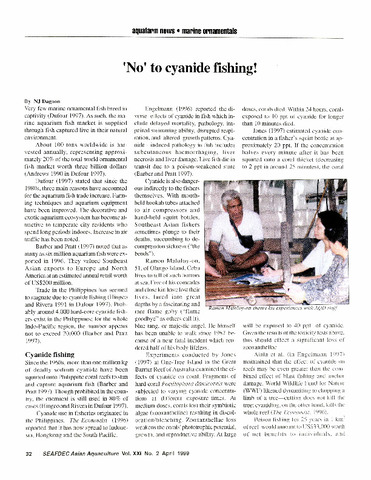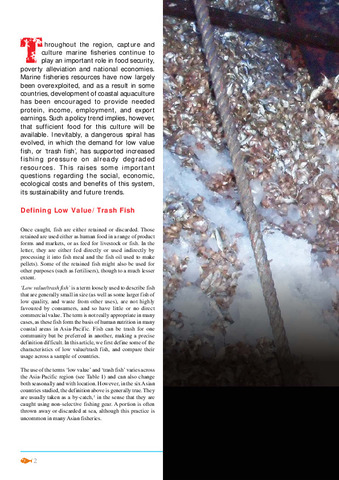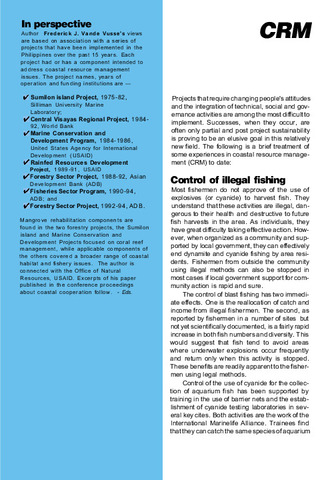| dc.contributor.author | Reyes, Ofelia S. | |
| dc.contributor.author | Duray, Marietta N. | |
| dc.contributor.author | Santiago, Corazon B. | |
| dc.contributor.author | Ricci, Manuele | |
| dc.date.accessioned | 2012-06-07T09:49:28Z | |
| dc.date.available | 2012-06-07T09:49:28Z | |
| dc.date.issued | 2011 | |
| dc.identifier.citation | Reyes, O. S., Duray, M. N., Santiago, C. B., Ricci, M. (2010). Growth and survival of grouper Epinephelus coioides (Hamilton) larvae fed free-living nematode Panagrellus redivivus at first feeding. Aquaculture International 19(1), 155-164 https://doi.org/10.1007/s10499-010-9349-0 | en |
| dc.identifier.issn | 0967-6120 | |
| dc.identifier.uri | http://hdl.handle.net/10862/974 | |
| dc.description.abstract | The free-living nematode, Panagrellus redivivus, was tested as live food for grouper Epinephelus coioides larvae during the first feeding stage. A series of experiments were conducted to determine the acceptability of the free-living nematodes in grouper larvae at first feeding, the optimum nematode density and the response of the larvae to nutritionally enriched nematode. All experiments were conducted in 200-L conical tanks filled with 150-L filtered seawater and stocked at 15 larvae L−1. Duration of feeding experiments was up to day 21 (experiment 1) and 14 days (experiment 2 and 3). Brachionus plicatilis and Artemia (experiment 1) and Brachionus plicatilis alone (experiment 2 & 3) was used as the control treatment. Observations indicated that the grouper larvae readily fed on free-living nematodes as early as 3 days posthatching, the start of exogenous feeding. Optimum feeding density for the larvae was 75 nematodes ml−1. The enrichment of cod liver oil or sunflower oil influenced the total lipids and n-3 highly unsaturated fatty acids of P. redivivus, which in turn influenced those of the grouper larvae, however, growth and survival of the larvae were not affected (P > 0.05). The results from this investigation showed that the nematode, P. redivivus, can be used as first live food for grouper larvae from the onset of exogenous feeding until they could feed on Artemia nauplii. | en |
| dc.description.sponsorship | This study is a part of the collaborative, EU-funded INCO-DC project with contract No. ERB IC18 CT98-0333. The authors thank Dr. R. M. Coloso, Dr. V. R. Alava for their comments and suggestions in the preparation of the manuscript and the staff of the Finfish Hatchery of SEAFDEC/AQD for their assistance. | en |
| dc.language.iso | en | en |
| dc.publisher | European Aquaculture Society | en |
| dc.subject | Epinephelus coioides | en |
| dc.subject | Brachionus plicatilis | en |
| dc.subject | Nematoda | en |
| dc.subject | Helianthus | en |
| dc.subject | Artemia | en |
| dc.title | Growth and survival of grouper Epinephelus coioides (Hamilton) larvae fed free-living nematode Panagrellus redivivus at first feeding | en |
| dc.type | Article | en |
| dc.date.updated | 2012-06-07T09:46:04Z | |
| dc.citation.volume | 19 | |
| dc.citation.issue | 1 | |
| dc.citation.spage | 155 | |
| dc.citation.epage | 164 | |
| dc.citation.journalTitle | Aquaculture International | en |
| dc.subject.asfa | marine fish | en |
| dc.subject.asfa | cultured organisms | en |
| dc.subject.asfa | growth | en |
| dc.subject.asfa | marine invertebrates | en |
| dc.subject.asfa | fatty acids | en |
| dc.subject.asfa | survival | en |
| dc.subject.asfa | fish larvae | en |
| dc.subject.asfa | fish oils | en |
| dc.subject.asfa | fish culture | en |
| dc.identifier.doi | 10.1007/s10499-010-9349-0 | |
| dc.subject.scientificName | Panagrellus redivivus | en |



